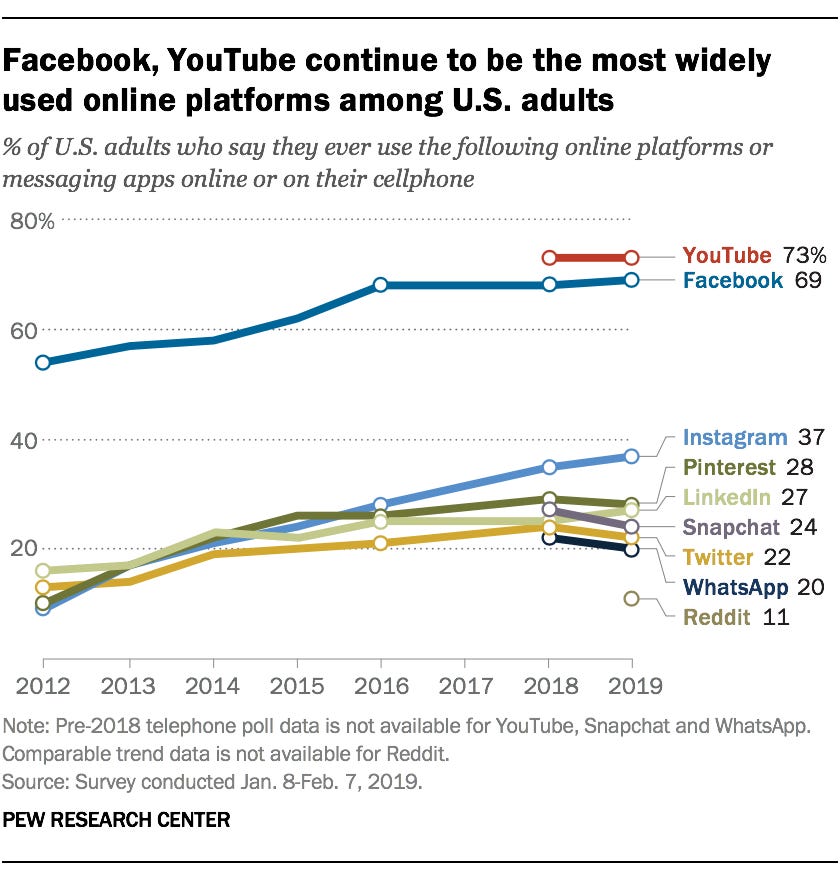Why is this interesting? - Thursday, April 25
On “news pegs”, newsletters, and the “publicity industrial complex”
Colin here. As Noah alluded to in his intro to yesterday’s edition, we are trying to keep this a “news peg” free zone. What do we mean by this? So much of what we see in culture today is pegged to selling something. That appearance on The Late Show? Hyping a tour or movie release. The person appearing on Morning Joe? Hocking a film. A lot of the commentary or book reviews we read? Penned by people who have something coming out. There’s a monstrous undercurrent that is driving to sell or publicize. The tweets below sum up my sentiments nicely:


The “publicity industrial complex” is a powerful force: making sure that when St. Vincent has a new album coming out, for example, we see a barrage of carefully choreographed interviews in magazines, clumped together like three-year-olds playing soccer. And don’t get Noah started about the Robert Caro press blitz where every interesting nook and cranny is strip mined until you don’t even have to read the book. The result is often boring and predictable, as talking points are rehashed, anecdotes are worn thin, and you can see through the veneer to the underlying commercial interest.
Why is this interesting?
As Amanda and Kaitlin articulate so well: interesting people are always interesting. Specifically, some of the most interesting things they do and think about come well before the publicity tour and subsequent release. That’s where the inspiration is gathered, the dots are connected, and the fibers take shape into a functional muscle. For those that truly care, this is the fruitful time, and not when there is a kabuki dance between a PR firm and the publication to get airtime in exchange for favors. For those that don’t see the hidden forces, this is about access to big names, and withholding them if certain checklists aren’t adhered to.
It is better and more freeing for places to write about what is interesting and meaningful, even if it is completely decoupled and floating in space, far from something that needs to generate sales. People are increasingly aware they are sitting in the “PR industrial complex” and it actually creates unease, distrust, and dislike.
Part of this is why I love things like The Stack, a company that sends me a beautiful small indie magazine every month. California Sunday seems fresh and original. The news-peg revolt might even be playing a role in the emerging newsletter culture: a bunch of idea centric publications that explore niche topics without worries of pushy PR people or even running ads (in the case of Substack subscriptions). I would also posit that it is part of why podcasts, which often surf on less time sensitive topics seem to be surging in interest. Forgive the obvious example but Serial was an old story re-told with masterful angles and mechanisms. That approach will always find you fans.
And make no mistake, some people can be artful with the peg. When you witness what my beloved Lex column at the FT does every day with witty commentary it can be very useful and add insight.
But I think editors at bigger outlets need to be more wary of how hard they are surfing the promotional currents as it makes the output often formulaic, predictable, and a drag to read. The world is full of amazing stories, and plenty of great places to honor them. (CJN)
Chart of the Day:
Social media growth mostly flat year-on-year in US according to Pew. (NRB)

Quick Links:
Barometers on Television is a Tumblr full of … pictures of barometers on the sets of television shows. (NRB)
Amazon is working on Alexa headphones. Via the excellent Tim Carmody newsletter Amazon Chronicles. (NRB)
First Japanese-built airliner in 50 years. (CJN)
CNBC says Apple is spending $30 million per month on AWS. That actually strikes me as low, but the article makes it sound like Apple might just be using Amazon storage, not running services. “For the sake of comparison, Lyft has agreed to pay AWS at least $300 million for cloud services through the end of 2021, while Pinterest said it has committed to spending at least $750 million on AWS in a six-year period that ends in mid-2023. That works out to an average of $100 million per year for Lyft and $125 million per year for Pinterest. Snap has committed to spending $1.1 billion on AWS through the end of 2022, at least $150 million of that in 2019.” (NRB)
Thanks for reading,
Noah (NRB) & Colin (CJN)


